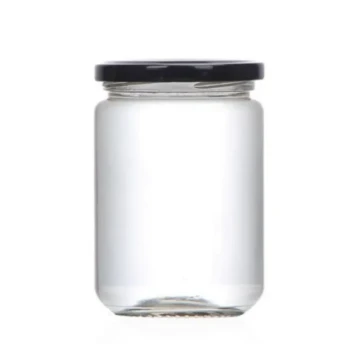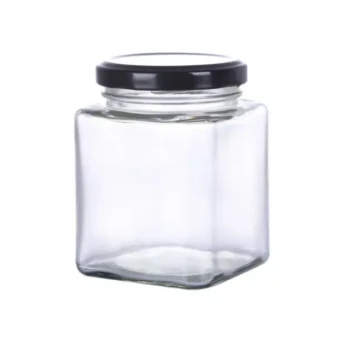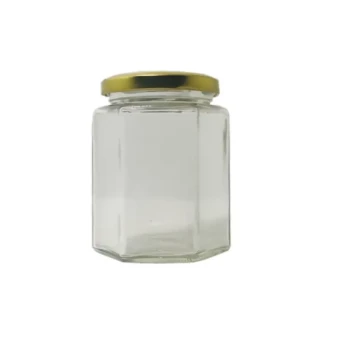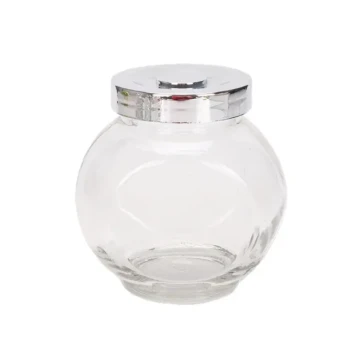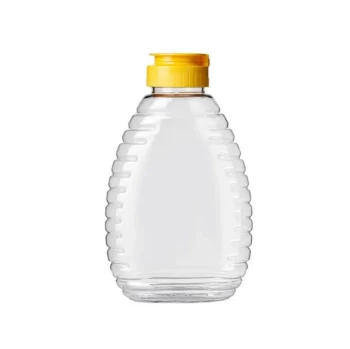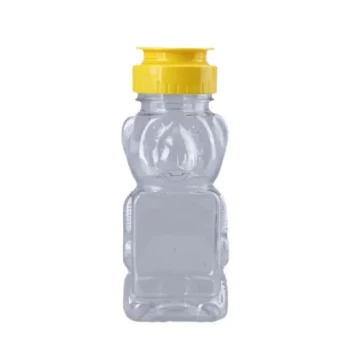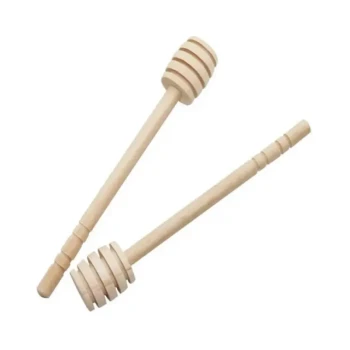Yes, a glass jar is the ideal container for storing honey. Glass is inert and non-porous, providing a superior barrier against moisture and air that can degrade honey's quality over time. While high-quality, food-safe plastic is acceptable, glass remains the gold standard for preserving the delicate flavor, aroma, and consistency of honey for the long term.
Storing honey is fundamentally about protecting it from its four main enemies: moisture, air, light, and heat. While a glass jar offers the best defense, the conditions in which you store the container—a cool, dark place—are just as critical to preserving its quality.
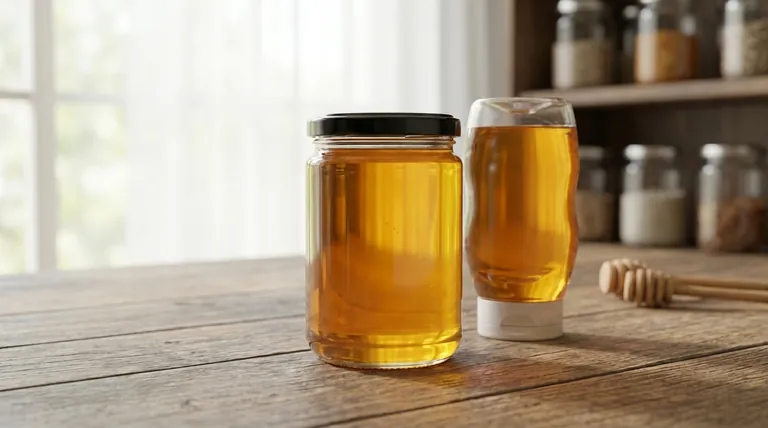
Why Container Choice and Storage Conditions Matter
Honey is a remarkably stable food, but its unique chemical properties make it vulnerable to degradation if not stored correctly. The goal of proper storage is to prevent unwanted changes to its taste, texture, and aroma.
The Role of the Container: Glass vs. Plastic
Glass is the preferred material because it is impermeable. It creates a true seal against the outside environment, offering the best protection from moisture absorption and the loss of aromatic compounds.
Food-safe plastic containers are widely used and generally sufficient for typical consumption periods. However, plastic is slightly porous, and over very long periods (years), it can allow for a minuscule exchange of air and moisture, which may subtly affect the honey.
The Critical Factor: An Airtight Seal
Honey is hygroscopic, meaning it naturally absorbs moisture from the air. If honey's water content rises above approximately 18-20%, naturally occurring yeasts can activate and begin to ferment the honey, giving it a sour, alcoholic taste. A tight-fitting lid is non-negotiable for preventing this, regardless of the container material.
The Environmental Enemies: Light and Heat
Exposure to direct sunlight and high temperatures are detrimental to honey. Heat and UV light can darken the honey's color, degrade its delicate enzymes, and destroy the nuanced aromatic compounds that define its flavor profile. This is why a cool, dark pantry is a far better storage location than a sunny kitchen counter.
The One Material to Absolutely Avoid: Metal
You should never store honey in containers made of reactive metals. The natural acids in honey can react with the metal, causing oxidation. This process can contaminate the honey, alter its flavor, and potentially leach unwanted metallic compounds into it.
Understanding the Trade-offs
Choosing between glass and plastic involves balancing ideal preservation with practical convenience. There is no single "wrong" choice, only a more informed one.
The Case for Glass: Purity and Longevity
Glass offers unmatched purity. As an inert material, there is zero risk of it reacting with the honey or leaching chemicals. For beekeepers, honey connoisseurs, or anyone planning to store honey for more than a year, glass is the undisputed best option for maintaining its original quality.
The Case for Plastic: Convenience and Durability
Plastic containers, especially squeeze bottles, offer undeniable convenience. They are lightweight, shatterproof, and easy for daily use. For honey that will be consumed within several months to a year, a high-quality, BPA-free, food-safe plastic container is a perfectly practical and safe choice.
Making the Right Choice for Your Honey
Your decision should be guided by your primary goal for the honey you are storing.
- If your primary focus is maximum quality and long-term preservation (1+ years): Always choose a glass jar with an airtight lid to ensure the honey remains as pristine as the day it was harvested.
- If your primary focus is convenience for everyday use: A food-safe plastic container, especially a squeeze bottle, is a perfectly acceptable and practical option for honey you plan to use within a year.
- For any honey, regardless of the container: The most important rule is to store it in a cool, dark place away from direct sunlight and heat sources to protect its delicate character.
Ultimately, understanding these core principles empowers you to effectively protect the quality of your honey.
Summary Table:
| Container Type | Best For | Key Consideration |
|---|---|---|
| Glass Jar | Long-term storage (1+ years), maximum quality preservation | Impermeable, inert, provides the best barrier against degradation |
| Food-Safe Plastic | Short-term use (within a year), everyday convenience | Lightweight and shatterproof, but slightly porous over very long periods |
| Metal Container | Avoid | Reactive; can cause oxidation and contaminate the honey |
Protect the quality of your honey harvest with the right supplies.
As a leading wholesale supplier to commercial apiaries and beekeeping equipment distributors, HONESTBEE provides the durable, high-quality containers and equipment you need to ensure your honey reaches the market in perfect condition. From bulk glass jars to essential beekeeping tools, we support your operation's success from hive to shelf.
Contact our team today to discuss your wholesale supply needs and learn how we can help you maintain the highest standards for your honey.
Visual Guide
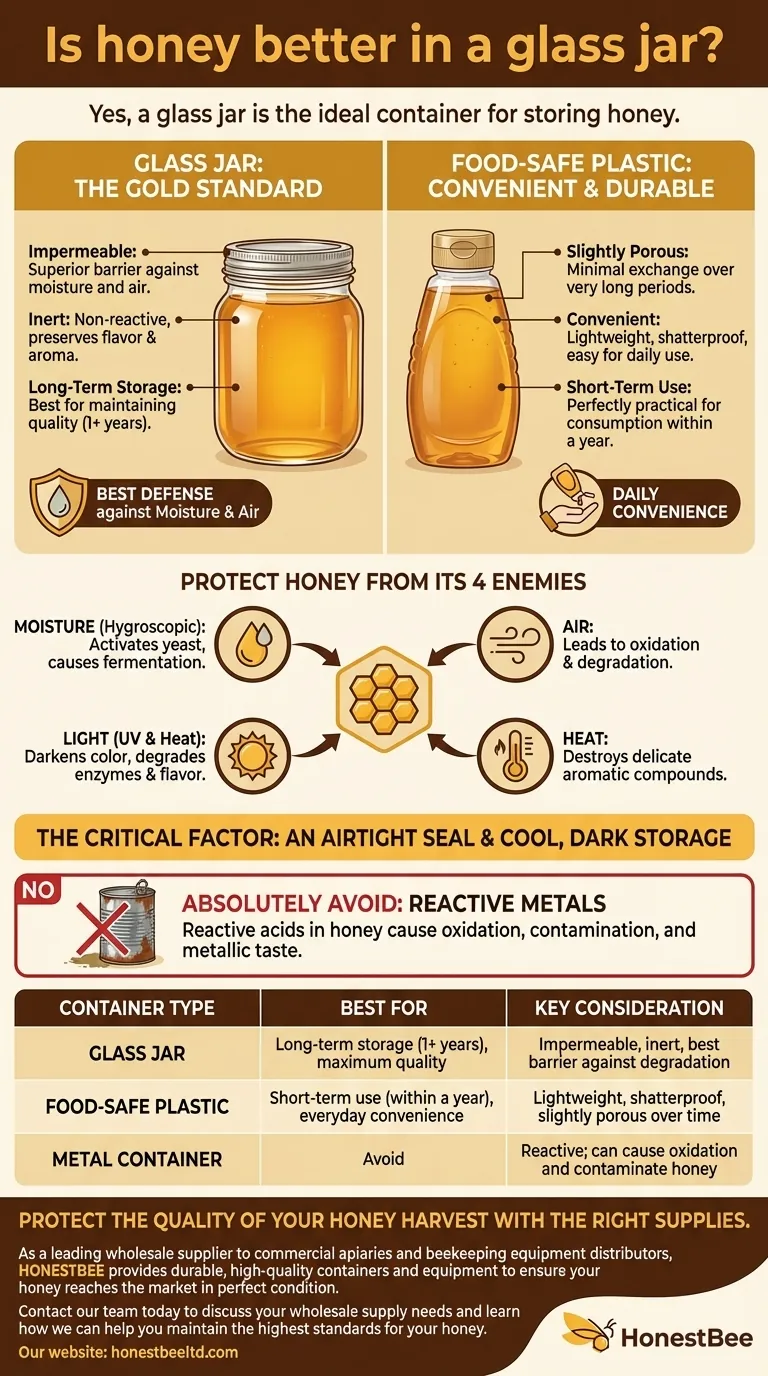
Related Products
- Classic Round Glass Honey Jar with Lid
- Modern Square Glass Honey Jar with Twist Off Lid
- Hexagonal Glass Honey Jars with Metal Lug Caps Elegant Versatile Packaging
- Classic Drum Shaped Glass Honey Jar with Airtight Lid
- Inverted Squeezable Honey Jar with No Drip Flip Top Cap for Easy Pouring
People Also Ask
- Why do honey bees store honey in the hive? The Key to Colony Survival and Resilience
- What precautions should be taken when operating the honey mixer? Essential Steps for Safe & Efficient Honey Processing
- When is an automatic labeling machine recommended for honey products? Scale Your Production with Precision
- What are the main components of a standard hive? A Guide to the Modular Beehive System
- What are the key features to look for in a honey warming source? Preserve Honey Quality with Gentle, Even Heat
